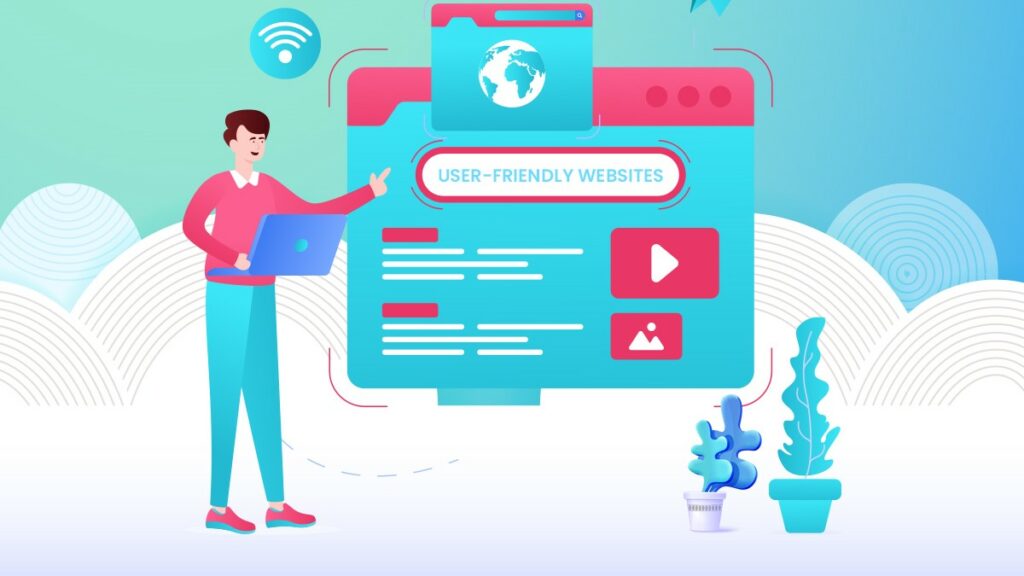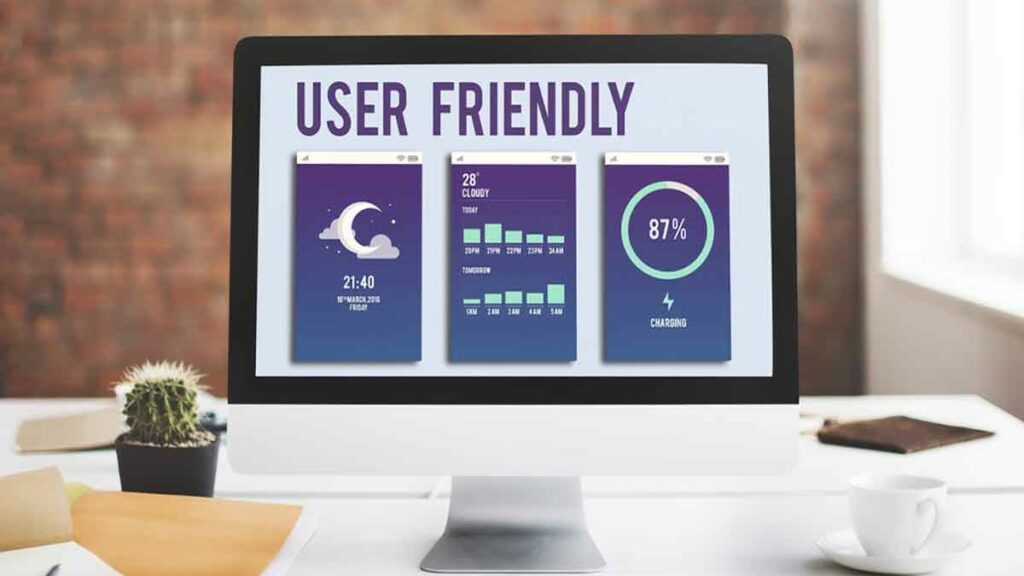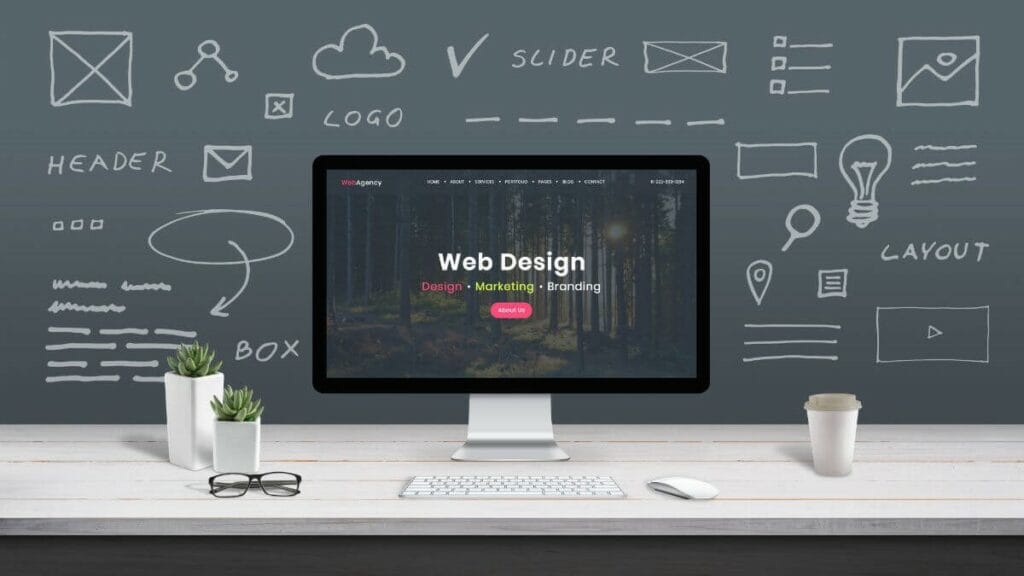Websites today need to focus on the people using them. Good website design puts users first to help companies and groups online. User-friendly sites make navigating and finding what you need easy. They encourage users to keep coming back and take action on the site. These sites help convert visitors into customers who are satisfied.
This article will look at what really matters for making user-friendly websites. It will explain the key parts that make sites easy to use. Websites need these to succeed online. Paying attention to users is important for any group with a website.
Designing with users in mind leads to positive experiences that benefit both the users and the organizations. Following these principles helps websites achieve their goals and gives users what they want in a clear, straightforward way.
Transparent and Intuitive Site Navigation
Having simple and intuitive navigation is key for user-friendly websites. Users need to easily move around the site and find what they’re looking for without any confusion.
Organizing information well and including easy-to-use menus helps with this. “Breadcrumb trails” also let users know where they are in the site’s structure. This improves how people navigate the site.
Adaptive Design and Optimization for Mobile Platforms
Nowadays most people use their phones for the internet, so sites must work well on mobile. An “adaptive design” makes sure the website adjusts to different screen sizes so the experience stays good no matter the device.
Mobile optimization focuses on making pages load fast on phones. It reduces extra scrolling and formats pages for mobile viewing. These things give users a smooth experience whether on a computer or phone.
Prompt Page Load Speed
How quickly a website loads its pages greatly affects the user’s experience. Sites that take too long to show pages will frustrate users and cause them to leave the site without seeing everything. To improve load times, there are things web designers can do like making image and page files smaller in size.
Using caching, which stores page content for faster repeat loads, also helps. Regularly checking website speed is important for catching and fixing any problems slowing things down. Faster loading pages keep users happy.
Harmonious and Unified Aesthetic
The look of a user-friendly site needs to be tidy and consistent. Creating a visual “hierarchy” helps users easily see what’s most important at a glance. Colors, fonts, and overall branding need to fit together in a pleasing way.
Consistency across all pages gives users a sense of familiarity as they browse. If every part of the site has the same formatting, it feels comfortable. Paying attention to design details creates a unified, cohesive style that users enjoy.
Captivating and Superior Quality Content
Providing valuable, well-made content is key for user-friendly websites. Users visit websites to find information or answers, so the content needs to help with that. Including things like images, videos and charts helps make the content more interesting to learn from and keep users engaged.
Telling stories can help form an emotional connection too, making the content stick with users more. Varied, educational content keeps users satisfied with their time on the site.
Inclusive Accessibility and Universal Design
Websites should aim to be usable by all people, no matter their abilities. Following “accessibility guidelines” ensures everyone can access the content in their own way. For example, images need descriptions for blind users.
Headings, navigation and keyboard functions need to work for mobility-limited users. Coherent design and structure helps all users understand and interact with the content. Inclusiveness gives more people a positive experience, which benefits both users and businesses alike. Meeting these standards helps create websites that welcome everyone.
Potent Call-to-Actions
Calls to action, or CTAs, help guide users towards their goals on the site. Placing well-designed CTAs within the content encourages users to take the next step, like making a purchase, signing up for updates, or filling out a form.
Testing different CTAs against each other helps improve their effectiveness. The best CTAs look good, get straight to the point, and match the site’s overall goals. This small tweaking leads users in the right direction.
Streamlined Page Layouts
Balancing content with whitespace on pages is important for usability. Too much content crammed together overwhelms users. But large empty spaces make the page look bare. Using grids and visual hierarchies brings order and structure.
They help users easily understand what’s most important and how sections relate. Curing content accessibly keeps the reading smooth. This page formatting provides clarity and engages users as they browse.
User Feedback and Repetitive Testing
Asking users for feedback and testing how they use the site helps find ways to improve the experience. By listening to users and watching what they do, designers can spot issues or ideas for enhancements.
Repeatedly testing new designs based on feedback ensures the site keeps evolving with what users want and need. This iterative process leads to a continuously better experience.
Security Measures and Trustworthiness
Gaining users’ trust is important for any website. Using measures like encryption (SSL certificates) protects information and shows users their data is secure. Reliable payment options and strong privacy practices also increase trustworthiness.
Highlighting trust signs like customer reviews and security badges further boosts credibility. Focusing on trust keeps users feeling comfortable and confident about the site. Security and protection help create a positive relationship between users and the company or organization behind the site.
Incorporation of Social Media
Including social media can boost user engagement and awareness of your site. Putting buttons to share your content on sites like Facebook and Twitter lets users easily share with their friends. This drives more natural traffic to your site and grows your online presence.
Social media also helps create a community where people can interact and share their experiences with your brand. Users feel more connected when social is incorporated well.
Search Engine Optimization (SEO)
Making your site search engine friendly is important for organic traffic and visibility. On-page SEO techniques like carefully choosing keywords, refining meta tags, and properly structuring URLs help your site rank higher in search results.
When search engines can easily find and understand your site, users can also discover it through searches. This leads to more relevant visitors and improves the experience for anyone looking for your business or topic online. Proper search optimization attracts qualified traffic to your site.
Analytics and Data Monitoring
Using tools that analyze site usage provides valuable insights. Tracking numbers like page views, bounce rates, and purchases allows you to pinpoint problems.
The data reveals what parts of the site users find most and least useful. Understanding visitor habits helps customize the website better to meet their needs. Data helps guide smart decisions to improve the experience and achieve business objectives.
Ongoing Refinements and Updates
To keep users satisfied, websites need regular updates to stay modern. Watching industry changes helps adopt new designs and functions before competitors. Keeping content fresh and fixing glitches contributes to a smooth experience.
Upgrading with technologies that enhance usability ensures the site remains competitive and useful over time. Monitoring trends also provides opportunities to continually innovate and make the experience even better. Ongoing improvements keep users engaged.
Conclusion
Building a truly user-friendly site requires careful planning in many different areas. Things like clear menus, a design that works on any device, fast loading pages, attractive styling, interesting articles, usability for all people, calls to action that make it easy to do something, organized page layouts, getting feedback from users, strong protections, adding social media, optimizing for search engines, reviewing data on usage, and ongoing updates all need attention.
When tackling this wide range of factors, a website can be created that satisfies users and helps a business flourish. Focusing on the whole experience leads to users who feel it is easy and enjoyable to stick around.
Creating User-Friendly Websites FAQs
What makes it easy for users to navigate a site?
Clear navigation helps users find what they need easily. Things like organized menus, site maps, and “you are here” breadcrumbs make it simple to get around. These features reduce confusion so visitors can focus on their goals.
Why is responsive design so important?
Responsive design ensures a site adjusts nicely to any device. This provides a consistent experience whether someone uses a phone, tablet or computer. Making pages load fast, reducing unnecessary scrolling and optimizing for mobile use are key. Adapting the layout for various screens is important today as many people browse on phones.
How does good content improve usability?
Websites succeed when they offer visitors what they came for – useful information. Providing relevant answers keeps people engaged. Multimedia like images, videos and graphics make content more interesting to look at and share. Storytelling also creates an emotional connection that makes the content easier to remember.
Why is accessibility for all users important?
Websites should welcome everyone, including those with disabilities. Following guidelines for accessible design means content works for blind or low-vision users, people who can’t use a mouse, and more. Things like text alternatives for images, logical article structure using headings, and keyboard-friendly controls improve inclusion. This benefits both businesses and users.
How can social media enhance user experience?
Adding options to share content on networks like Facebook and Twitter lets visitors easily spread the word. This brings in more organic traffic and awareness. Building a community through platforms also fosters brand loyalty. Users feel connected through interactions, which makes for a better overall experience.
Why is ongoing improvement important?
Keeping up with evolving trends ensures sites stay competitive. Regular content updates, maintenance and bug fixes provide a smooth experience over time. Adapting innovative technologies and functions that enhance usability guarantees value is delivered to visitors as their needs change. Focusing on progress keeps people engaged and returning.
Unlock Your Digital Potential with Opza’s Cutting-Edge Web Design in Dubai
In today’s digital world, your website holds the power to attract people and grow your business. Opza is a leading web design company in Dubai that utilizes modern methods to develop beautiful, high-functioning websites customized for your brand and users.
Check out Opza’s specific web design services in Dubai now to improve your online image. We will help you engage visitors, increase website visits, and maximize sales. Work with our team to design an exciting site that captivates audiences and helps you succeed online. Join forces with Opza to take your digital presence to the next level!
Forge impactful connections and expand your reach by partnering with Opza’s experienced designers. We realize your vision through innovative strategies and technical excellence. Let our cutting-edge work shine new light on your business in the digital era. Contact us today – take that first step towards enhanced opportunity and results online.










